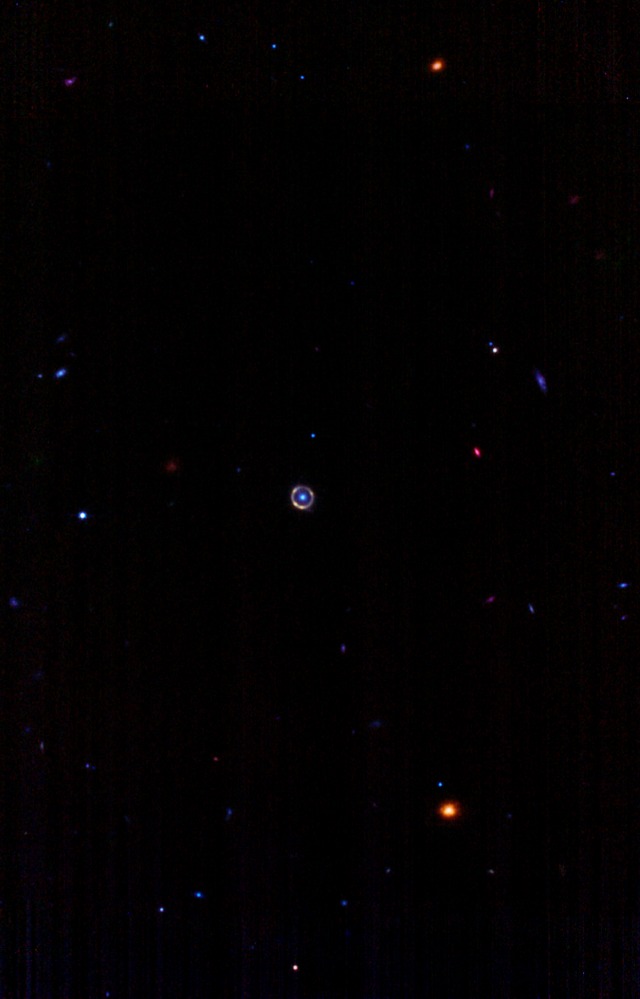In far-off space, Webb has captured an almost flawless Einstein ring
Our feeds have been inundated with breathtakingly beautiful images of space since the first James Webb Space Telescope images were released in July, ranging from crazily detailed pictures of Jupiter to the farthest distant star known.
A nearly flawless Einstein ring that has traveled around 12 billion light-years to reach us has now been captured by Webb, proving that he is an expert at what he does. And we can’t help but stare.
Below is a colorized version of the photograph that astronomy graduate student Spaceguy44 posted on Reddit.
An Einstein ring develops when a big galaxy in front of a distant galaxy magnifies it and wraps it into a nearly perfect ring, as Spaceguy44 explains on Reddit.
The concerned galaxy is known as SPT-S J041839-4751.8.
Here is a further-reaching perspective of it that Spaceguy44 also processed:
Without the Einstein ring, according to Spaceguy44, we wouldn’t be able to observe this galaxy at all.
Additionally, the existence of Einstein rings makes it possible to investigate these galaxies, which would otherwise be nearly hard to observe.

Einstein predicted this effect, hence the term gravitational lensing, which describes the process.
The alignment of the far-off galaxy, the nearby magnifying galaxy, and the observer (in this case, the Webb space telescope) is required for the effect to occur.
Spaceguy44 claims that the stem and base of a wine glass produce a similar effect, so you may try it for yourself if you like. Try doing that with a book page to see the word magnified.
Even though seeing Einstein rings is unusual, it does happen occasionally. Hubble has already taken pictures of stunning Einstein rings.
Even again, this isn’t the first time Webb has managed to photograph SPT-S J041839-Einstein 4751.8’s ring.
The same region was photographed by the Near Infrared Camera (NIRCam) of the space telescope back in August, and Spaceguy44 colorized and released it at that time as well.
The picture below, though, wasn’t as clear.

The information in the most recent image was downloaded from the MAST portal and was obtained by Webb’s Mid-Infrared Instrument (MIRI) camera.
Three different filters are used on the picture. The F1000W filter, which collects light at 10 m wavelengths, is red. The F770W filter for 7.7 m wavelengths is green. The F560W filter, which detects wavelengths of 5.6 m, is blue.
Spaceguy44 used astropy to align and colorize the photos after which GIMP was used for additional editing.
Editor’s note: This article has been changed to replace references to “light years away” with “light journey time” (29 August 2022). The expansion of the Universe has surely made this galaxy’s distance from us grow due to the great distance its light has to travel to reach us.
This article has been sourced from the site or sites cited in the references. This content, created without disturbing the content of the original article, is subject to Astrafizik.com content permissions. Astrafizik.com and original sources are allowed to be used by 3rd parties provided that they are referenced.
Astrafizik sitesinden daha fazla şey keşfedin
Subscribe to get the latest posts sent to your email.